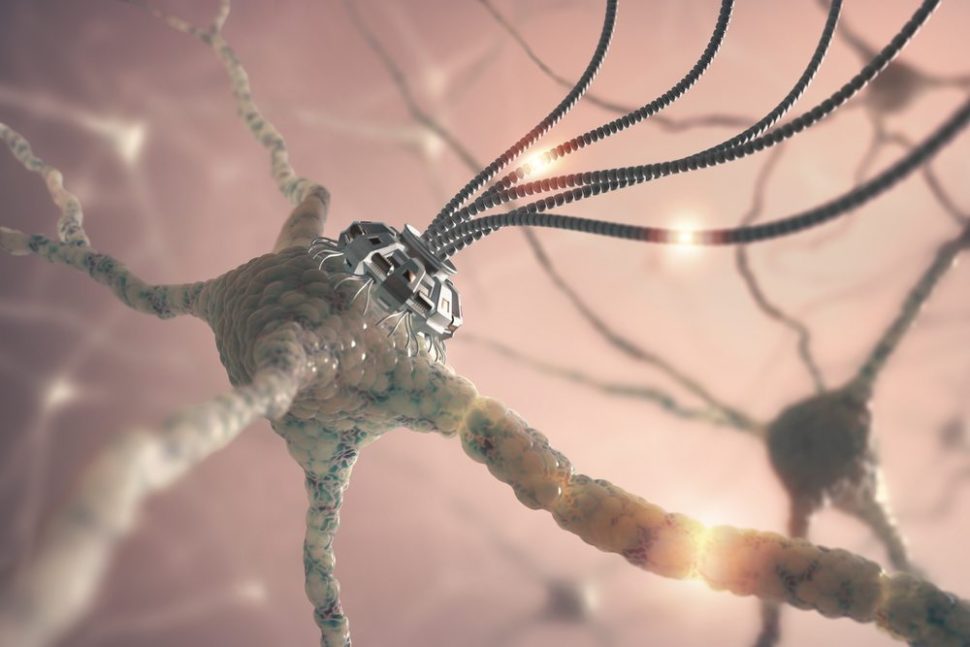Artificial Intelligence is, locally, a computer algorithm tasked with solving input problems based on accessible data and operational parameters, with respect to the amount of computational power available to the algorithm. More generally, AI is the name given to machine intelligence.
Within the vast field of AI are specific concepts like machine learning and deep learning.
In the same way as Russian Matryoshka dolls, where the small doll is nested inside the bigger one, each of the three segments (Deep Learning, ML and AI) is a subset of the other. Advances in these three technologies are already revolutionizing many aspects of modern life, and although very much related, they are not the same.
In this post, we’ll begin with the biggest doll, “AI”, and work our way down to the smallest.
Know the Difference Between AI, Machine Learning, and Deep Learning:
1. Artificial Intelligence
As a branch of computer science, AI is an area of research aiming to reproduce the various cognitive capacities of human sentience, especially the ability to solve complex problems, in machines. Admittedly, that’s one broad definition of AI, which is a broad and fertile domain itself, open to other scientific and technological disciplines.
AI may refer to NPCs (non-player characters) in video games, image recognition systems, voice and speech recognition platforms, autonomous vehicles, predictive algorithms, and other specialized computer programs.
All these forms of AI have one thing in common: they are based on a pre-defined input, in other words, programmed beforehand to carry out a specific task. That leads us to the next level, machines that learn by themselves.
2. Machine Learning
A subset of AI, Machine Learning focuses on learning abilities, or how to make machines learn on their own. Without the need to hand-code instructions, ML systems get access to large datasets, apply their knowledge, train, and learn from mistakes to complete a specific task.
For example, IBM’s Deep Blue–which beat chess master Garry Kasparov in 1997–is not strictly a Machine Learning system because it wasn’t able to cross-reference past moves and matches.
However, the Google AlphaGo that beat world champion Lee Sedol at the game of Go is a machine learning platform that recalled hundreds of previous plays to inform its tactics.
ML systems sift through data, learn patterns and predict outcomes that’s why Machine Learning tools are at the top of interests for data-driven businesses. A lot of learning materials on ML are available online in case you would like to dive deeper into the topic.
3. Deep Learning
As a subfield of Machine Learning, and a sub-subset of AI, Deep Learning is an automatic learning technology based on deep neural networks. When you know the difference between AI and terms that further define it, you are practicing the very concept applied to these systems.
A DL algorithm is made of layers of artificial nodes or “neurons”, forming a sort of a virtual computer where each layer performs simple calculations that serve as an input to the following layer. That translates to huge gains in time and efficiency of the whole system. Like with machine learning, these systems are also free of catastrophic forgetting, in that they are able to recall data from past computations and apply them to present solutions.
Expensive and requiring huge storage and processing resources to train, DL systems are being developed by major companies, such as Amazon, Facebook, Google, IBM, and Microsoft, and will almost certainly be given the power to make influential decisions in the near future.



















When I was a university student working on my BS in Computer Science it was argued by all professors that artificial intelligence requires sentience. That’s what the Turing Test is all about. I don’t believe we have created artificial intelligence yet. The media has stolen the term and now uses it to describe just about any program or script.
Agreed. That’s what we’ve learned as well. Of course, when you consider how difficult it is to familiarize new technologies with the population at large, using the term “AI” is a tangible starting point.
What you refer to is AGI https://en.wikipedia.org/wiki/Artificial_general_intelligence, which has not been created yet.
Definition: “Artificial general intelligence (AGI) is the intelligence of a machine that could successfully perform any intellectual task that a human being can. It is a primary goal of some artificial intelligence research and a common topic in science fiction and future studies.”
Even so, the Turing test already has been defeated by AI in several sub-tests. Here is just one example: https://www.zdnet.com/article/mits-artificial-intelligence-passes-key-turing-test/
You cannot distinguish the results of AI thinking from Human thinking in many areas. A great example of that is that Google Translate has surpassed human translators. A Turing test could not distinguish the output of a human vs computer.
AI is defined as “the theory and development of computer systems able to perform tasks that normally require human intelligence, such as visual perception, speech recognition, decision-making, and translation between languages.”
The world’s leading researchers in AI are at companies like Google and Facebook, which use the term accurately per its definition, and so do the leading universities. http://ai.stanford.edu/ https://www.csail.mit.edu/
By definition, AI exists, is real, and AGI is not yet real.
It is not generally understood that artificial sentience will require a profound revision of our scientific worldview. Why so?
We know about things we see and hear, which are presented to us as patterns of color and sound. Yet color and sound per se have no official place in our science.
Schrödinger states the case for color:
If you ask a physicist what is his idea of yellow light, he will tell you that it is transversal electromagnetic waves of wavelength in the neighborhood of 590 millimicrons. If you ask him: But where does yellow come in? he will say: In my picture not at all, but these kinds of vibrations, when they hit the retina of a healthy eye, give the person whose eye it is the sensation of yellow.
Whitehead fills in the general picture:
What we see depends on light entering the eye. Furthermore we do not even perceive what enters the eye. The things transmitted are waves or—as Newton thought — minute particles, and the things seen are colors. Locke met this difficulty by a theory of primary and secondary qualities. Namely, there are some attributes of the matter which we do perceive. These are the primary qualities, and there are other things which we perceive, such as colors, which are not attributes of matter, but are perceived by us as if they were such attributes. These are the secondary qualities of matter.
Why should we perceive secondary qualities? It seems an unfortunate arrangement that we should perceive a lot of things that are not there. Yet this is what the theory of secondary qualities in fact comes to. There is now reigning in philosophy and in science an apathetic acquiescence in the conclusion that no coherent account can be given of nature as it is disclosed to us in sense-awareness, without dragging in its relation to mind.
_________________
https://www.fieldfx.biz/
Hey Zayan! This side is Ashley Marsh and I have just popped in one of your articles and really found it interesting. Artificial Intelligence means getting a computer to mimic human behavior in some way whereas Machine Learning is a subset of AI, and it consists of the techniques that enable computers to figure out from the data and deliver AI applications. Meanwhile, Deep Learning is a subset of Machine Learning that enables computers to solve more complex problems. The difference between the three are super amazing and informative I have get to know so much about the AI, Machine Learning, and Deep Learning by reading this article. I have had a fantastic time reading this interesting article and want you to keep posting such blog posts from your end. I am definitely looking forward to reading more such articles in future.